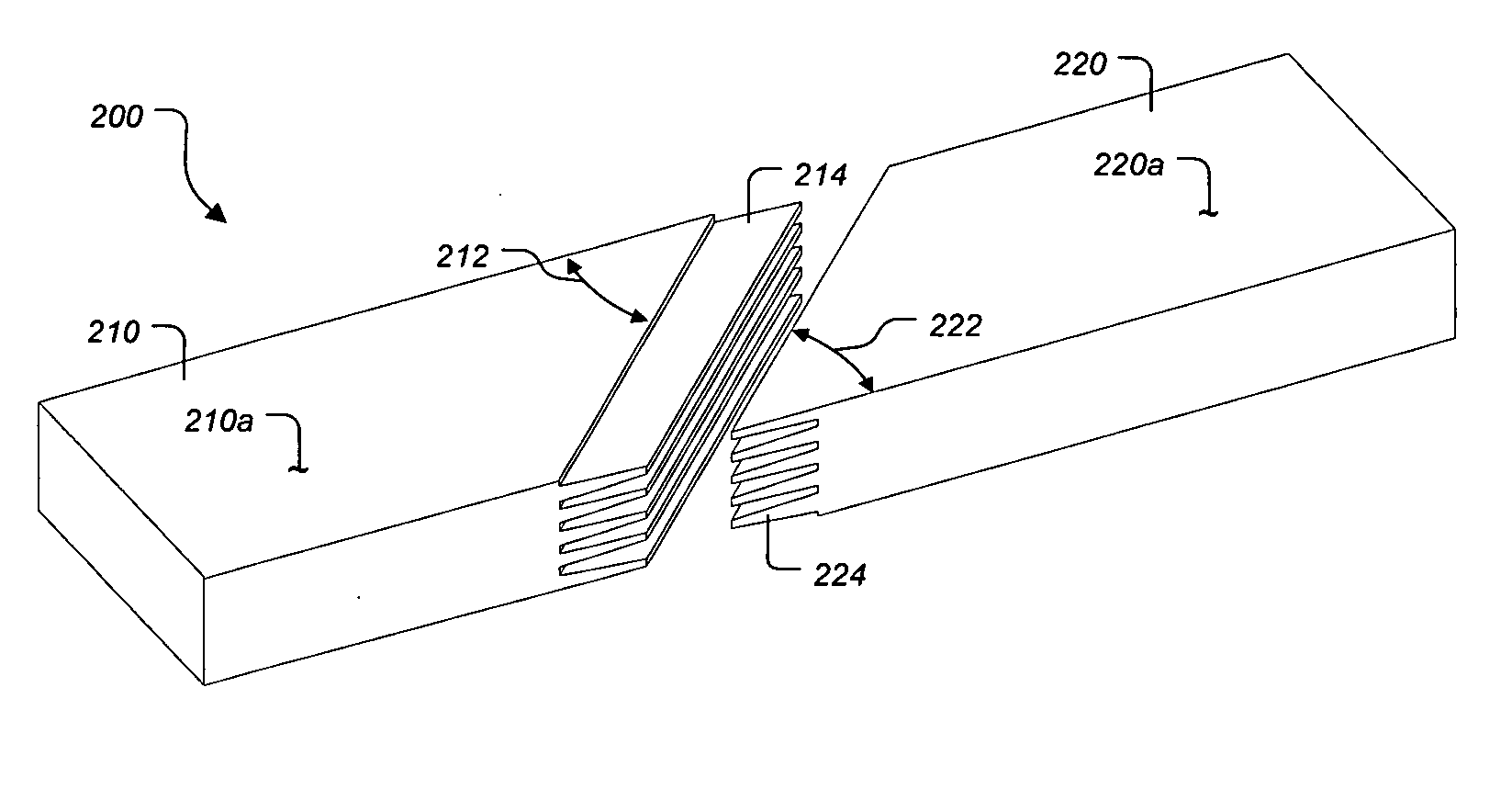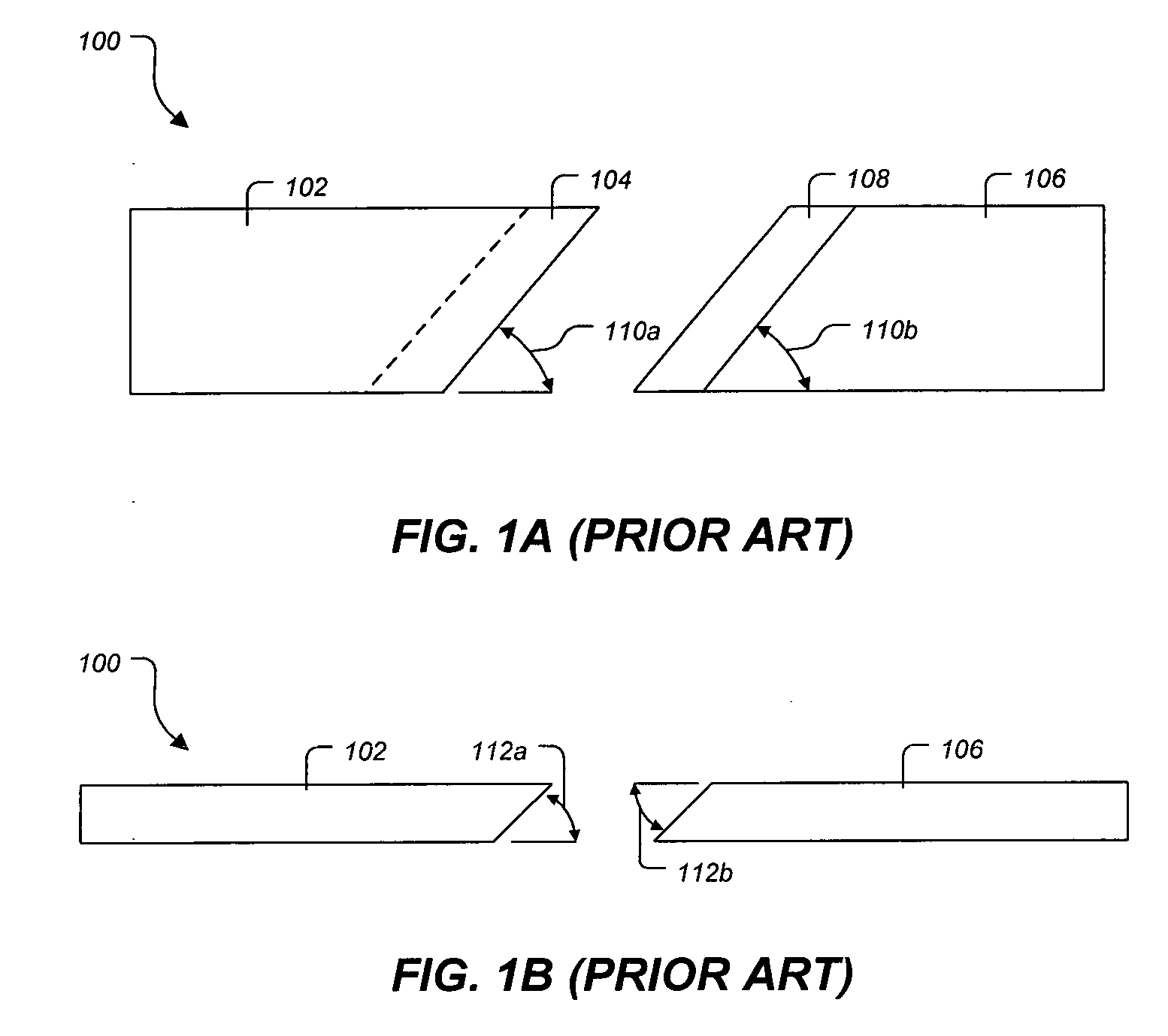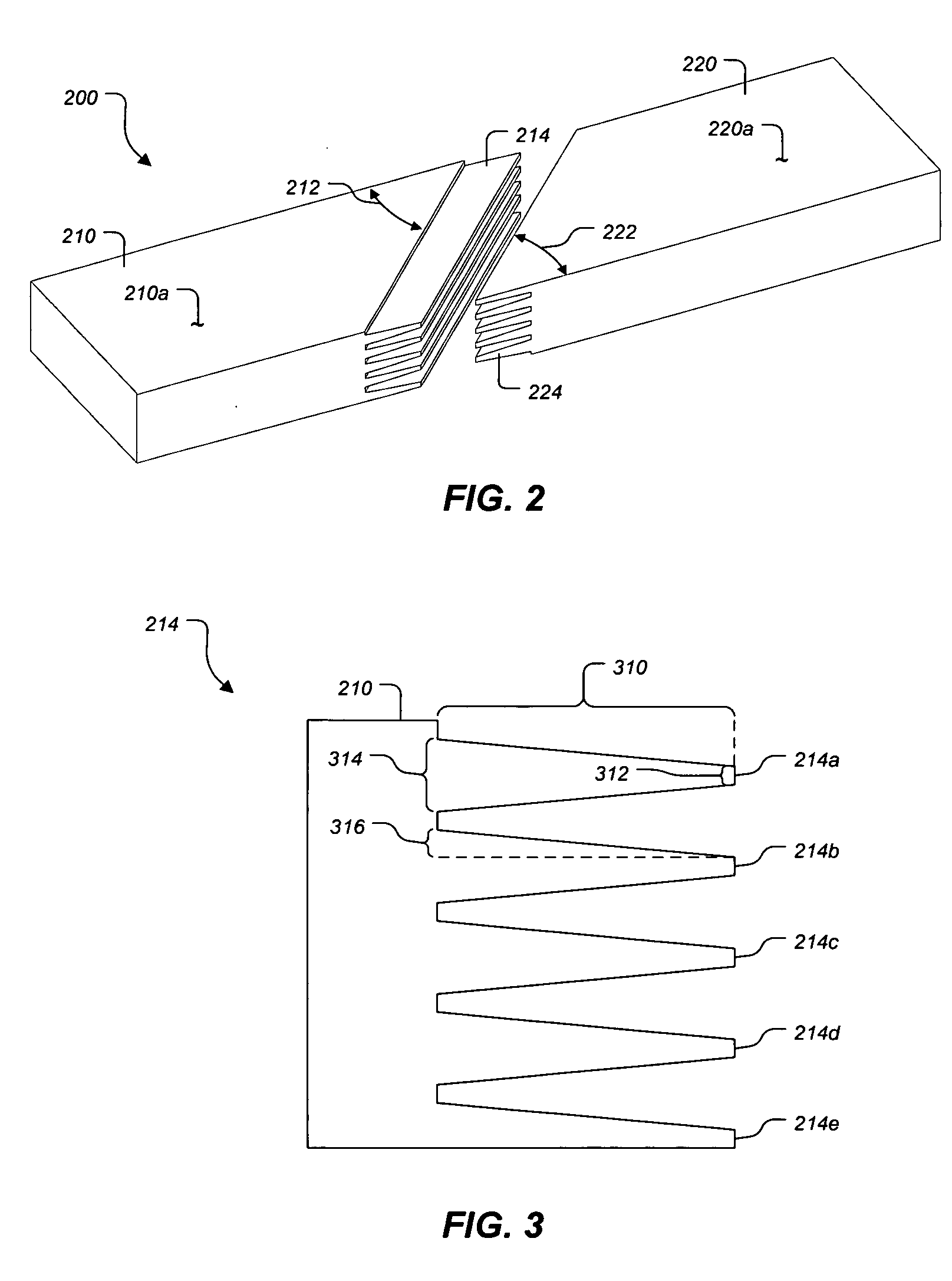Assembly and method for providing an interlocking angular end joint
a technology of angular end joints and end joints, which is applied in the direction of adhesive application devices, manufacturing tools, and dovetail work, etc., can solve the problems of poor results in high-end millwork applications, poor quality of end joinery provided by factory end joiners, and insufficient availability of most wood species in wide widths and long lengths to adequately satisfy demand, etc., to achieve easy machining and assembly, and increase the strength of end joined boards
- Summary
- Abstract
- Description
- Claims
- Application Information
AI Technical Summary
Benefits of technology
Problems solved by technology
Method used
Image
Examples
Embodiment Construction
[0025] Reference will now be made to the following detailed description of the preferred and alternate embodiments of the present invention. Those skilled in the art will recognize that the present invention provides many inventive concepts and novel features, that are merely illustrative, and are not to be construed as restrictive. Accordingly, the specific embodiments discussed herein are given by way of example and do not limit the scope of the present invention.
[0026] Referring now to FIGS. 1A and 1B in the drawings, an end joint 100 according to the prior art is illustrated. Prior-art end joint 100 includes a first portion 102, a first scarf joint face 104 angularly inclined to the width of first portion 102 at an angle 110a, a second portion 106, a second scarf joint face 108 angularly inclined to the width of second board portion 106 at an angle 110b. First scarf joint face 104 and second scarf joint face 108 further includes a first angular incline 112a and a second angular...
PUM
 Login to View More
Login to View More Abstract
Description
Claims
Application Information
 Login to View More
Login to View More - R&D
- Intellectual Property
- Life Sciences
- Materials
- Tech Scout
- Unparalleled Data Quality
- Higher Quality Content
- 60% Fewer Hallucinations
Browse by: Latest US Patents, China's latest patents, Technical Efficacy Thesaurus, Application Domain, Technology Topic, Popular Technical Reports.
© 2025 PatSnap. All rights reserved.Legal|Privacy policy|Modern Slavery Act Transparency Statement|Sitemap|About US| Contact US: help@patsnap.com



